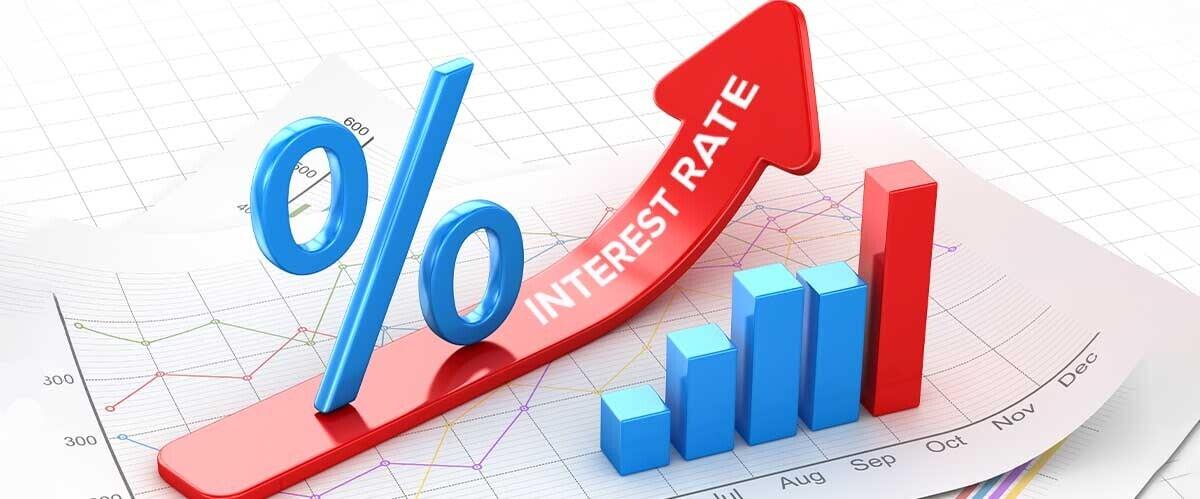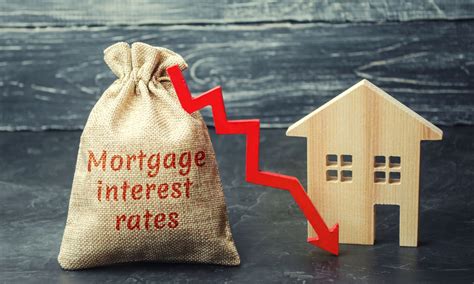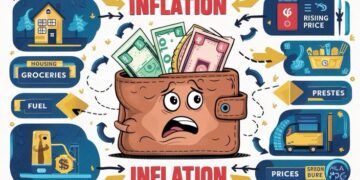The trajectory of interest rates is a constant source of fascination, speculation, and, for many, significant financial anxiety. From the individual homeowner planning a mortgage to global corporations assessing investment opportunities, and from central bankers navigating inflation to everyday consumers managing their credit card debt, interest rates cast a long shadow over economic activity. Understanding “what’s next” for these crucial economic levers isn’t just an academic exercise; it’s a practical necessity for making informed financial decisions and protecting or growing wealth. For content creators, delivering insightful, comprehensive, and clear information on interest rates is a powerful strategy for driving SEO and securing high Google AdSense revenue, as the topic consistently ranks high in search demand. This extensive guide will demystify interest rates, explore the forces that shape their movements, analyze their profound impact across various sectors, and delve into the expert forecasts and potential scenarios defining their future.
Interest Rates: The Cost of Money
At its most fundamental, an interest rate represents the cost of borrowing money or the return on lending money, expressed as a percentage of the principal amount. When you borrow, the interest rate is the fee you pay for the privilege of using someone else’s capital. When you lend (e.g., deposit money in a savings account or buy a bond), it’s the compensation you receive for foregoing immediate use of your funds.
Interest rates are not static; they fluctuate constantly in response to a myriad of economic, political, and even psychological factors. These rates are a fundamental tool used by central banks worldwide, including the Federal Reserve in the United States, the European Central Bank (ECB), and Bank Indonesia (BI), to influence economic growth, employment, and, most critically, inflation.
Key concepts related to interest rates include:
- Nominal vs. Real Interest Rates: The nominal interest rate is the stated rate, without adjusting for inflation. The real interest rate is the nominal rate minus the inflation rate. This real rate is what truly reflects the purchasing power of your money over time. For example, if you earn 5% interest on a savings account but inflation is 3%, your real return is only 2%.
- Types of Interest Rates: A. Policy Rates (e.g., Fed Funds Rate, BI 7-Day Reverse Repo Rate): These are set by central banks and serve as benchmarks for all other interest rates in an economy. They influence how much commercial banks pay to borrow from each other overnight. B. Prime Rate: The interest rate commercial banks charge their most creditworthy corporate customers. It’s often linked directly to the central bank’s policy rate. C. Mortgage Rates: The interest rate charged on home loans, which can be fixed (stays the same) or adjustable (fluctuates with market rates). D. Consumer Loan Rates: Rates for personal loans, car loans, and credit cards. Credit card rates are typically much higher due to the unsecured nature of the debt. E. Savings Account/Deposit Rates: The interest paid by banks to depositors for holding their money. F. Bond Yields: The return an investor receives on a bond. Bond yields move inversely to bond prices; when bond prices fall, yields rise. Government bond yields, especially on Treasury bonds, are key indicators of market expectations for future interest rates and economic growth.
The Maestro of Rates: Central Bank’s Role
Central banks are the primary architects of monetary policy, and their decisions on interest rates are pivotal. Their main objectives typically revolve around achieving price stability (controlling inflation) and fostering maximum sustainable employment.
How central banks influence rates:
- Policy Rate Adjustments: By raising their policy rate, central banks make it more expensive for commercial banks to borrow money. This cost then trickles down, increasing interest rates on loans for businesses and consumers, thereby discouraging borrowing and spending. This is an anti-inflationary measure. Conversely, lowering the policy rate makes borrowing cheaper, encouraging spending and investment to stimulate a sluggish economy.
- Open Market Operations: Central banks buy or sell government securities in the open market. Buying securities injects money into the banking system, increasing reserves and putting downward pressure on interest rates. Selling securities does the opposite, removing money and pushing rates up.
- Quantitative Easing (QE) / Quantitative Tightening (QT): These are unconventional monetary policies. QE involves large-scale asset purchases (like government bonds or mortgage-backed securities) to directly lower long-term interest rates and inject liquidity. QT is the reverse, reducing the central bank’s balance sheet, which generally puts upward pressure on long-term rates.
- Forward Guidance: Central banks communicate their future intentions regarding monetary policy. This guidance aims to shape market expectations, influencing current long-term interest rates.
Forces Driving Interest Rate Movements

Beyond central bank actions, a multitude of complex factors interact to determine the direction and magnitude of interest rate changes. These forces often act in concert, creating a dynamic and sometimes unpredictable environment.
A. Inflation Expectations: The Primary Driver
Inflation, the rate at which prices for goods and services rise, is arguably the single most influential factor on interest rates.
- Eroding Purchasing Power: High inflation erodes the purchasing power of money. Lenders demand higher interest rates to compensate for the diminished value of the money they will be repaid in the future. If inflation is 5%, a lender receiving 5% nominal interest is effectively earning zero real interest.
- Central Bank Response: Central banks are acutely focused on controlling inflation. When inflation rises above their target (typically around 2%), they are more likely to raise policy rates aggressively to cool down the economy and bring prices back under control. Conversely, in periods of very low inflation or deflation, central banks may cut rates or even implement negative rates to stimulate demand.
- Market Expectations: Financial markets constantly price in their expectations for future inflation. If traders anticipate higher inflation, bond yields will rise as investors demand higher compensation for holding longer-term debt.
B. Economic Growth and Output
The overall health and growth trajectory of an economy significantly influence interest rates.
- Strong Economy, Higher Rates: In a robust economy with strong GDP growth and low unemployment, demand for credit typically increases as businesses expand and consumers spend more. This higher demand for capital can push interest rates up. Central banks may also raise rates to prevent the economy from overheating and triggering inflation.
- Weak Economy, Lower Rates: During economic slowdowns or recessions, demand for credit weakens. Businesses scale back investment, and consumers reduce borrowing. Central banks are likely to cut rates to stimulate borrowing, investment, and consumption, aiming to revive economic activity.
C. Supply and Demand for Credit
Like any other market, the supply and demand for money and credit play a crucial role in determining its price (the interest rate).
- Increased Demand for Loans: When businesses need to invest in new projects or consumers want to buy homes/cars, the demand for loans rises, which can push interest rates up.
- Increased Supply of Funds: If there’s an abundance of savings (money available to lend) from individuals, institutions, or foreign investors, the increased supply of capital can push interest rates down.
- Government Borrowing: Large government deficits require governments to borrow heavily by issuing bonds. Increased government borrowing can “crowd out” private borrowers, putting upward pressure on overall interest rates as the government competes for available funds.
D. Global Economic Conditions and Capital Flows
Interest rates are not determined in isolation; global factors exert significant influence.
- Global Growth and Inflation: Economic conditions in major global economies can ripple across borders. For example, high inflation in a large trading partner might lead to imported inflation, influencing domestic rate decisions.
- Capital Flows: Money flows across borders seeking the highest risk-adjusted returns. If interest rates in one country are significantly higher than another, capital might flow into the higher-rate country, strengthening its currency and potentially putting downward pressure on its long-term bond yields (as increased demand for bonds pushes up their price). Conversely, capital outflows can push rates up.
- Exchange Rates: Interest rate differentials between countries can impact exchange rates. Higher interest rates typically attract foreign capital, strengthening the domestic currency.
E. Geopolitical Events and Market Sentiment
Unforeseen events and prevailing market psychology can cause sudden and significant shifts in interest rates.
- Crises and Uncertainty: Geopolitical crises, wars, pandemics, or major economic shocks can lead to a flight to safety, where investors seek refuge in highly liquid government bonds, pushing their yields down. Conversely, uncertainty about government solvency can push yields up.
- Market Speculation: Traders and investors constantly anticipate future economic data and central bank actions, and their collective buying and selling can influence bond yields in the short term.
- Confidence: Investor and consumer confidence levels can impact spending, investment, and ultimately, demand for credit, thereby affecting interest rates.
The Far-Reaching Impact of Interest Rate Changes

Changes in interest rates reverberate throughout the economy, impacting individuals, businesses, and governments in profound ways. These effects are often multi-layered and can manifest over time.
A. Impact on Consumers and Households
Interest rate shifts directly affect the financial health and spending patterns of ordinary people.
- Borrowing Costs (Mortgages, Loans, Credit Cards):
- Mortgages: Higher interest rates mean higher monthly mortgage payments for new fixed-rate loans and for existing adjustable-rate mortgages, reducing disposable income and potentially dampening housing demand. Lower rates have the opposite effect, making homeownership more affordable and stimulating the housing market.
- Auto Loans & Personal Loans: Similarly, higher rates increase the cost of financing vehicles and personal debt, potentially leading to fewer purchases.
- Credit Cards: Credit card interest rates are often tied to the prime rate. Rate hikes lead to higher interest payments on outstanding credit card balances, increasing the financial burden on households with revolving debt.
- Savings and Investments:
- Savings Accounts & CDs: Higher interest rates are good news for savers, as they earn more interest on their deposits, incentivizing saving over spending. Lower rates discourage saving.
- Bonds: When interest rates rise, the value of existing bonds (with lower fixed interest payments) falls, as new bonds offer higher yields, making existing ones less attractive.
- Consumer Spending: Higher borrowing costs and potentially higher savings returns can lead consumers to reduce discretionary spending, which can slow economic growth.
- Wealth Effect: Changes in asset prices (like housing values or bond prices) due to interest rate movements can affect consumer confidence and spending.
B. Impact on Businesses
Businesses, from small enterprises to large corporations, are highly sensitive to interest rate fluctuations.
- Cost of Capital: Higher interest rates increase the cost of borrowing for businesses, making it more expensive to finance new investments, expansion projects, or even day-to-day operations. This can lead to reduced capital expenditure and slower job creation.
- Profit Margins: Businesses carrying significant debt will see their interest expenses rise with higher rates, squeezing profit margins.
- Stock Market Performance: Higher interest rates can make bonds more attractive relative to stocks, potentially drawing investment away from the equity markets. They also increase a company’s cost of capital, which can reduce future earnings estimates and depress stock valuations.
- Exchange Rates and Exports: Higher interest rates can strengthen a country’s currency (due to increased foreign capital inflow), making its exports more expensive and imports cheaper. This can negatively impact export-oriented businesses.
- Investment Decisions: Companies are less likely to undertake new projects with high upfront costs if borrowing rates are prohibitive, slowing innovation and expansion.
C. Impact on Government Debt
Governments, especially those with large national debts, are heavily impacted by interest rate changes.
- Debt Servicing Costs: Higher interest rates mean a greater portion of the government’s budget must be allocated to paying interest on its outstanding debt, potentially reducing funds available for public services, infrastructure, or other investments.
- Fiscal Policy Flexibility: High debt servicing costs can limit a government’s ability to use fiscal policy (government spending and taxation) to stimulate the economy during downturns.
D. Impact on the Housing Market
The housing sector is particularly sensitive to mortgage rates.
- Affordability: Higher mortgage rates directly reduce housing affordability by increasing monthly payments, potentially pricing out a segment of buyers.
- Demand and Prices: Reduced affordability and higher borrowing costs typically lead to lower demand for homes, which can slow down house price appreciation or even cause prices to fall.
- Refinancing Activity: When interest rates fall, homeowners are incentivized to refinance their existing mortgages at lower rates, reducing their monthly payments and freeing up disposable income. This activity dries up when rates rise.
Forecasting Interest Rates: Challenges and Outlooks

Predicting the precise future path of interest rates is notoriously challenging, even for the most seasoned economists and market analysts. It’s akin to predicting the weather, but with far more variables and human behavioral components. Nevertheless, various institutions and experts continuously provide outlooks based on their analysis of key economic indicators and central bank communications.
A. Key Factors in Forecasting
- Inflation Trajectory: The most critical determinant. Forecasters closely watch consumer price index (CPI), producer price index (PPI), and personal consumption expenditures (PCE) data, as well as inflation expectations surveys. If inflation remains stubbornly high, central banks will likely keep rates higher for longer.
- Economic Growth Data: GDP growth rates, unemployment figures, wage growth, and retail sales data provide insights into the economy’s strength. A strong economy typically implies higher future rates, while a weakening one suggests potential cuts.
- Central Bank Forward Guidance: Statements, meeting minutes, and speeches from central bank officials (e.g., the Federal Reserve Chair, ECB President, BI Governor) offer vital clues about their intentions and economic assessments. Markets dissect every word.
- Global Economic Environment: Economic performance and monetary policy decisions in major economies (US, Eurozone, China, Japan) significantly influence global capital flows and, consequently, domestic interest rates.
- Geopolitical Stability: Major geopolitical events can introduce volatility and uncertainty, influencing safe-haven flows into government bonds and impacting yields.
B. Current Outlooks (General Themes – as of mid-2025 perspective)
While specific forecasts are highly dynamic, a general consensus often emerges regarding the near to medium-term outlook. Given the current date (mid-2025), a typical narrative might involve:
- Inflation Moderation: Many central banks might be signaling that while inflation has come down from its peak, it remains somewhat elevated or sticky. Their primary focus would still be on ensuring inflation returns sustainably to target levels.
- “Higher for Longer” Mentality: The idea that interest rates might not return to pre-pandemic low levels quickly. Central banks might be wary of cutting rates too soon, risking a re-acceleration of inflation. This implies that while rate hikes might have paused or ended, significant cuts are not immediately on the horizon.
- Data Dependency: Central banks will emphasize that future decisions are strictly “data-dependent,” meaning they will react to incoming economic data (inflation, employment, growth) rather than adhering to a predetermined path. This creates uncertainty but also allows for flexibility.
- Divergent Paths: Different central banks might follow divergent paths based on their domestic economic conditions. For example, one country might be contemplating cuts while another is holding steady.
- Global Growth Headwinds: Potential global growth slowdowns or geopolitical risks could put downward pressure on long-term bond yields as investors seek safety.
C. Potential Scenarios
- “Soft Landing” Scenario: Inflation gradually cools without a significant economic recession. Central banks might implement modest, measured rate cuts to avoid over-tightening. This is often seen as the most desirable outcome.
- “Hard Landing” / Recession Scenario: Aggressive rate hikes (or rates held too high for too long) trigger a sharp economic downturn and increased unemployment. Central banks would then be forced to implement substantial rate cuts to stimulate recovery.
- “Stagflation” Scenario: A challenging environment characterized by persistent high inflation combined with stagnant economic growth and high unemployment. This is a difficult scenario for central banks, as cutting rates might worsen inflation, while raising them could deepen the recession.
- “Inflation Re-acceleration” Scenario: Inflation unexpectedly surges again, forcing central banks to resume rate hikes or maintain very high rates for an extended period, potentially leading to a deeper economic contraction.
Strategies for Navigating Varying Interest Rate Environments
Given the volatility and uncertainty inherent in interest rate movements, individuals and businesses need robust strategies to adapt and thrive.
A. For Homeowners and Aspiring Homebuyers
- Fixed vs. Adjustable Mortgages: In a rising rate environment, fixed-rate mortgages offer payment stability. In a falling rate environment, adjustable-rate mortgages (ARMs) or the ability to refinance can be advantageous. Always assess your risk tolerance.
- Paying Down Debt: With higher rates, prioritizing payment of high-interest debt (like credit cards or variable-rate loans) becomes even more critical to reduce overall interest expenses.
- Building Savings: Higher rates on savings accounts and CDs offer an incentive to build emergency funds and increase liquid savings.
- Housing Market Timing: Understand that rising rates cool housing markets, potentially leading to lower prices but higher borrowing costs. Falling rates do the opposite.
B. For Investors
- Bond Market Strategy: In a rising rate environment, shorter-duration bonds are generally preferred over long-duration bonds, as their prices are less sensitive to interest rate changes. Consider bond laddering strategies.
- Equity Market Implications: Higher rates can create headwinds for stock markets, particularly for growth stocks that rely heavily on future earnings. Value stocks or dividend-paying stocks might perform relatively better.
- Alternative Investments: Explore investments that may be less correlated with traditional interest rate movements, depending on your risk profile.
- Rebalance Portfolios: Regularly review and rebalance your investment portfolio to align with your risk tolerance and financial goals, considering the prevailing interest rate environment.
C. For Businesses
- Debt Management: Proactively manage debt. Consider refinancing variable-rate debt to fixed-rate debt when rates are low, or pay down existing debt to reduce interest expense exposure.
- Cash Flow Management: Optimize cash flow to minimize reliance on short-term borrowing, which is more susceptible to rate fluctuations.
- Pricing Strategies: Factor in higher borrowing costs when setting product or service prices to maintain profitability.
- Investment Decisions: Rigorously evaluate capital expenditure projects, factoring in the higher cost of financing in a rising rate environment.
D. For Governments and Policymakers
- Fiscal Discipline: Prudent fiscal policy and efforts to reduce national debt can mitigate the impact of rising interest rates on debt servicing costs.
- Monetary-Fiscal Coordination: Central banks and governments need to coordinate their policies to achieve economic stability without working at cross-purposes.
- Communication: Clear and consistent communication from central banks is crucial to manage market expectations and reduce volatility.
Adapting to the Rate Revolution
The intricate dance of interest rates is a permanent fixture of the global economy, constantly influenced by a complex interplay of inflation, economic growth, central bank policy, and global capital flows. Understanding “what’s next” for interest rates is less about pinpointing an exact figure and more about grasping the underlying forces and potential scenarios that could unfold. As we navigate the mid-2020s, the lingering effects of unprecedented monetary policy responses to recent global shocks, coupled with evolving inflation dynamics and geopolitical shifts, ensure that interest rates will remain a central point of discussion and decision-making for years to come.
For individuals, businesses, and governments alike, the key lies not in predicting every turn but in building resilience and adaptability. By staying informed about economic indicators, understanding central bank mandates, and proactively adjusting financial strategies, one can navigate the shifting interest rate landscape more effectively. Whether rates are rising, falling, or holding steady, an informed approach empowers better financial health, strategic investment, and ultimately, a more secure economic future. Embracing this knowledge is crucial for anyone looking to not just survive but thrive in the face of evolving economic realities, making authoritative content on interest rates an indispensable resource for a wide audience.






